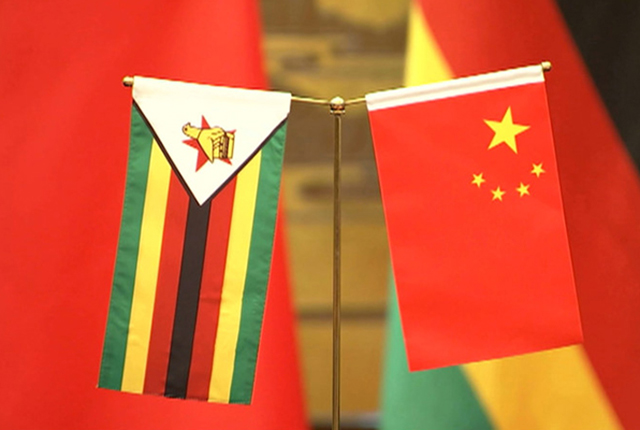Special Economic Zones: Zimbabwe on the money

Lovemore Chikova China-Africa Focus
Government’s recent announcement that it has earmarked the Norton and Mazowe areas for agriculture special economic zones is most welcome and in line with the fulfilment of provisions of the Zim-Asset economic blueprint.
Special economic zones are the way to go, as is evidenced by how they have managed to turnaround economies in the world, especially in Asia, and specifically in China.
Such designated zones attract foreign capital, bring in new technologies and increase production, leading to a quick industrialisation of the economy. Apart from the two recently announced areas for the SEZs, Finance Minister Patrick Chinamasa had already indicated plans to establish such zones in seven other parts of the country.
Bulawayo was targeted for leather and textiles, Lupane for petro-chemicals, the swathe of territory or corridor stretching from Victoria Falls-Gwayi–Binga–Kariba for tourism, Victoria Falls for finance, Sunway City as a technology hub and Harare and Mutare for diamond cutting.
Writing in a paper titled “Global Experiences with SEZ — With a focus on China and Africa”, Chinese expert Mr Zhihua Zeng said special economic zones are varied and cover a broad range of areas.
“The term “SEZ” here covers a broad range of zones such as free trade zones, export processing zones, industrial parks, economic and technology development zones, high-tech zones, science and innovation parks, enterprises zones and others,” he wrote.
“The basic concept of SEZs includes several specific characteristics: (a) it is a geographically delimited area, usually physically secured, (b) it has a single management or administration; (c) if offers benefits for investors physically within the zone; and (d) it has a separate customs area (duty-free benefits) and streamlined procedures.”
In other words, special economic zones “are set up when a country delimits a special area where, through exemption of customs duty, it formulates various preferential conditions and provides public facilities so as to attract foreign investors set up factories whose products are mainly for export”.
It is in the context of this definition that SEZs are known to attract investors because of the incentives they offer.
The investors bring with them new technologies and foreign capital to the particular country and at the same time increase export receipts when they export their finished goods.
The foreign firms can also be involved in toll manufacturing, whereby they bring in their specialised equipment and process raw materials or semi-finished goods for other companies.
It is important that in Norton, 50ha of land has been identified for development of an agricultural SEZ by the China Industrial International Group.
The Chinese firm has since demonstrated its commitment to a partnership that will increase agricultural production and result in the provision of relevant infrastructure such as roads and water reticulation.
In Mazowe, Government has identified 100ha of land for another SEZ specialising in agriculture. This comes as reports indicate that another Chinese firm, Qingdao Hengshun Zhongsheng Group, is on the verge of setting up a $6 billion industrial park in Zimbabwe.
The industrial park is expected to attract more Chinese firms dealing in different businesses.
Chinese firms are strategically positioned to come to Zimbabwe to operate in such industrial parks and SEZs. This is because of the growing political and economies ties between the two countries that have allowed firms from both ends to freely exploit business opportunities.
The other reason is that Chinese firms are working from the experience that their country went through when it established SEZs.
Much of the development and industrialisation of China is widely accredited to the reform and opening up policy that was instituted in the late 1970s. This policy’s major anchor was the establishment of the SEZs, which kick-started the industrialisation of China and changed its economic outlook forever.
The attraction of foreign companies to such industrial zones meant that China was now able to generate enough foreign currency. It is mainly because of the SEZs that China is now an industrialised economy, which has risen to second in the world.
For the SEZs to work in Zimbabwe, political will is needed to vigorously push for their establishment and ensuring that incentives are in place to attract foreign investors.
The major part requiring political will has already been done through the enactment of the Special Economic Zones Act.
What is now needed is a thorough follow-up to ensure that all the provisions of the Act are followed to install confidence in the investors.
There is also need to market the country, together with the Act, to the foreign investors. The two laws that the potential investors should acquaint themselves with are the Special Economic Zones Act and the Zimbabwe Investment Authority Act.
These point to the processes that the investors have to follow for them to operate in Zimbabwe. Let us briefly look at the major provision of the Special Economic Zones Act.
The Act provides for the establishment of SEZs, their administration, control and regulatory measures and incentives to be offered. The Act establishes an authority that will be responsible for establishing the SEZs to participate in export-oriented industrial activities, among providing other logistical needs for the firms operating in such zones. According to the Act, the firms operating in such zones will have to obtain approvals and licences.
Before approving an application, the authority will consider if the proposed investment will “lead to the creation of employment opportunities and the development of human resources”.
The authority will also look at other issues such as export orientation or import substitution, environment protection, transfer of technology and skills, linkages with the domestic economy, value addition and beneficiation of raw materials and industrialisation of the economy.
The licence will be valid for 10-years, subject to renewal. The Act indicates that the Indigenisation and Economic Empowerment Act will not apply “in relation to licensed investors operating in a special economic zone.
It empowers the authority in consultation with the minister responsible for the administration of the Labour Act to “provide rules for conditions of service, termination of service, dismissal from service and disciplinary proceedings that apply within every special economic zone.
Special incentives packages will also be offered to investors
The other important law, the Zimbabwe Investment Authority Act, sets up the Zimbabwe Investment Authority (ZIA) as a “one-stop” investment shop.
ZIA is the country’s investment promotion body empowered by the Act to facilitate both foreign direct investment and local investment. It was formed when the Export Processing Zones Authority and the Zimbabwe Investment Centre were merged. ZIA also issues licences to investors and approves their projects.
There is no doubt that Government is on the right track by promoting more foreign investment through SEZs. The glaring example of China shows how the Asian country progressed since the establishment of such zones starting from the early 1980s.
Cities which were largely fishing villages during that time were transformed in the last 35 years once they were declared as SEZs.
Feedback: [email protected]







Comments